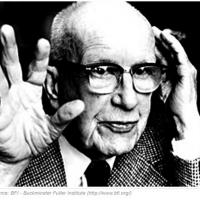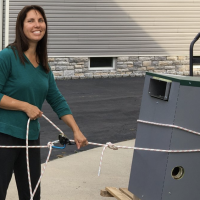Real efficiency gain potential vs sales fantasy vs as installed efficiency.

With regard to burning things and efficiency gains, the days of lots of low hanging fruit are limited. Finding a natural draft iron block serving a radiant slab is more and more rare where I am. New stuff that will save a substantial chunk of energy is less and less likely to be true.
Many boiler swaps are high efficiency for high efficiency with barely a real improvement in 20+ years. The physics of extracting heat from combustion are not going to change, the materials aren't going to change much either. 97% seem a reasonable peak to assume it won't be bested by much. Bean counters are pushing engineers to reduce costs. You can sell reliability or durability or repair-ability or even safety but selling new equipment has superior efficiency is most of the time, around here, sales talk nonsense. I was putting in 90+ equipment way back when and that's what's being replaced now. ECM isn't all that new anymore and isn't a quantum leap in savings.
New is more of just a re-up and not a substantial improvement in most cases. Yes a skilled tech can fetishist-ize efficiency with design and tuning, if the customer wants to pay for that. Most don't. New is simply a heat exchanger that's not plugged up or doesn't leak or components that don't have a million cycles on them or don't have an existing design/ build error or aren't rebreathing. Those pushing new gas burners as more efficient, better, high tech are either buying their own BS or are small cons. I know there are always some small gains on the table in addition to efficiency but it's diminishing returns at some point.
How high efficiency equipment is installed and used can make it very mid. and there's little honesty about that pre-sale. Efficiency tales are a bit of a contractors figs leaf covering up max. profit seeking and squelching repair. It's ok, it's natural to seek max. profit. Just be honest about it. Covering it up with half truths is shady.
Comments
-
-
Circulators will be forced to get more efficient driven by EuroPump efficiency standards that keep getting notched up. The motor technology still has some potential, but the pump hydraulics could still be improved. Maybe smoother volutes?
Actually a three piece type circ could be more efficient as you are not spinning the rotor in a fluid which adds drag. Maybe ball bearing small 3 piece, or like the PL series that doesn't need the center bearing assembly.
Efficiency not only in the fuel conversion but also the distribution and system efficiency.
Forced convectors should be the most efficient for the same reason plate heat exchangers are so efficient, two moving flows, fluid and air.
I've been impressed with some of the Jaga heat emitters, efficient, well built and stylish. I see them as a player for the A2WHP market. Small, attractive, VS, ODR fan units. Allowing heating and cooling. These match up better with heat loads in the teens or single digits as the warm floor feeling goes away with low load buildings.
Radiant /natural convection panel rads are nice but get really large with 100 or lower SWT.
Bob "hot rod" Rohr
trainer for Caleffi NA
Living the hydronic dream0 -
@hot_rod I agree there's still improvements on the table but they are pretty small. I said a much but the low hanging fruit is not there as much as is sold in the market. I'm with you on low temp. low head. The pump impeller design stuff I've read says the physics of the ideal was known long ago. We are playing a materials, package shape and cost game. I know it all adds up when the right choices are made and you can get a nice double digit gain in total. I'm all for efficiency seeking. The fact is consumers are buying condensing equipment based on little white lies about how much they will save and the OAT sensor isn't even hooked up and the boiler is left running at 180F with oversized pumps. The huge gain potentials are gone in combustion. People who promise things that they can't deliver are in the line of snake oil salesmen. There nothing wrong with a 96% boiler swap, like for like even if it's really only running at 87%. It's the perceive value sold that's based on BS that makes the trade a little shady. We'll get past it. I need to put a glossy together that has PHDs explaining it, so it's not my word against Joe Schome's.
Other efficiency topic "Bonnet capacity" I worked in SF doing sheet metal and forced air redesigns for a couple years and pulled out many old furnaces with bonnet cap. on them and to this day I thought it had to do with the size of the bonnet. The upside down open pan that the flue attached to. I mean it's the bonnet and it clearly states it's the bonnet capacity ….to……ah…..contain hot gasses? I though the size of the flue and bonnet dimensions created some limit. Ha, wrong. Turns out it's just industry code for max design BTU output. Every day if your paying attention. Oh and bonnet cap. divided by input doesn't equal AFUE efficiency.
0 -
-
@hot_water_fan I just finished a Chiltrix Cx-35 install. It's on the edge of too small, high mass slab and DHW indirect. The customer refused all back up options. So we talked at length about worst case and agreed we are testing limits. He has the money to correct later if necessary. We are so impressed with how well it works. It hasn't hit the low teens here yet so the jury is still out on capacity meeting peak loads. It was 25F for a bit and he had a full house of showers and dishes and laundry. It never missed a beat. I appreciate the co2/mbtu measure. The $ saved is what many with the funds to A2WHP want to see. CA just officially recognised A2WHP's as technically efficient. For a leader we sure were slow on that. I'm still unconvinced that the net life time co2 cost of HP production is all the benefit it's thought to be. Maybe it's the way with quality builds. For now it's the other option and there's no natural gas generator panels to put on the roof. I also see that air to air is the cost vs performance winner but maybe not for peak comfort.
0 -
Minor thoughts. Disregard at you pleasure…
The thing to remember is that we should, properly, be looking at the total system efficiency, or at least total from the delivery of X amount of energy to the facility in question to final output, which is — or should be — the comfort. We often don't do that. In hot water, for instance, we don't usually investigate the tradeoff between piping design and pump requirements. In forced air, we a very casual about duct losses vs. blower power or heat loss. And so on.
We tend to concentrate on one piece (such as the boiler or furnace) and draw conclusions or recommendations. Or we worry about gains in pump design, but not flow conditions. And so on.
As several above have pointed out, the major gains in individual component efficiency are well known and generally applied. Most of the minor gains still available come at a pretty stiff cost.
And nothing can compensate for poor installation of improper use of controls…
Br. Jamie, osb
Building superintendent/caretaker, 7200 sq. ft. historic house museum with dependencies in New England2 -
@jamie Hall All true. The trouble I'm seeing is that many customers will gravitate towards simple and easy to understand but false explanation. Sales person slaps the hood saying, "This little honey of a boiler is 97% efficient and is gonna save you tons of cash. You'll be giving it to a grand child and it cleans itself. Don't listen to the negative nerd talk, they'll have you eating sand at a communist picnic"
Edit: I know that air to air and A2WHP is not always a good fit. Efficiency dies in defrost mode and comfort is king. Expensive complex and limited output is not attractive.
0
Categories
- All Categories
- 87.3K THE MAIN WALL
- 3.2K A-C, Heat Pumps & Refrigeration
- 61 Biomass
- 429 Carbon Monoxide Awareness
- 120 Chimneys & Flues
- 2.1K Domestic Hot Water
- 5.8K Gas Heating
- 114 Geothermal
- 166 Indoor-Air Quality
- 3.7K Oil Heating
- 77 Pipe Deterioration
- 1K Plumbing
- 6.5K Radiant Heating
- 395 Solar
- 15.7K Strictly Steam
- 3.4K Thermostats and Controls
- 56 Water Quality
- 51 Industry Classes
- 50 Job Opportunities
- 18 Recall Announcements


